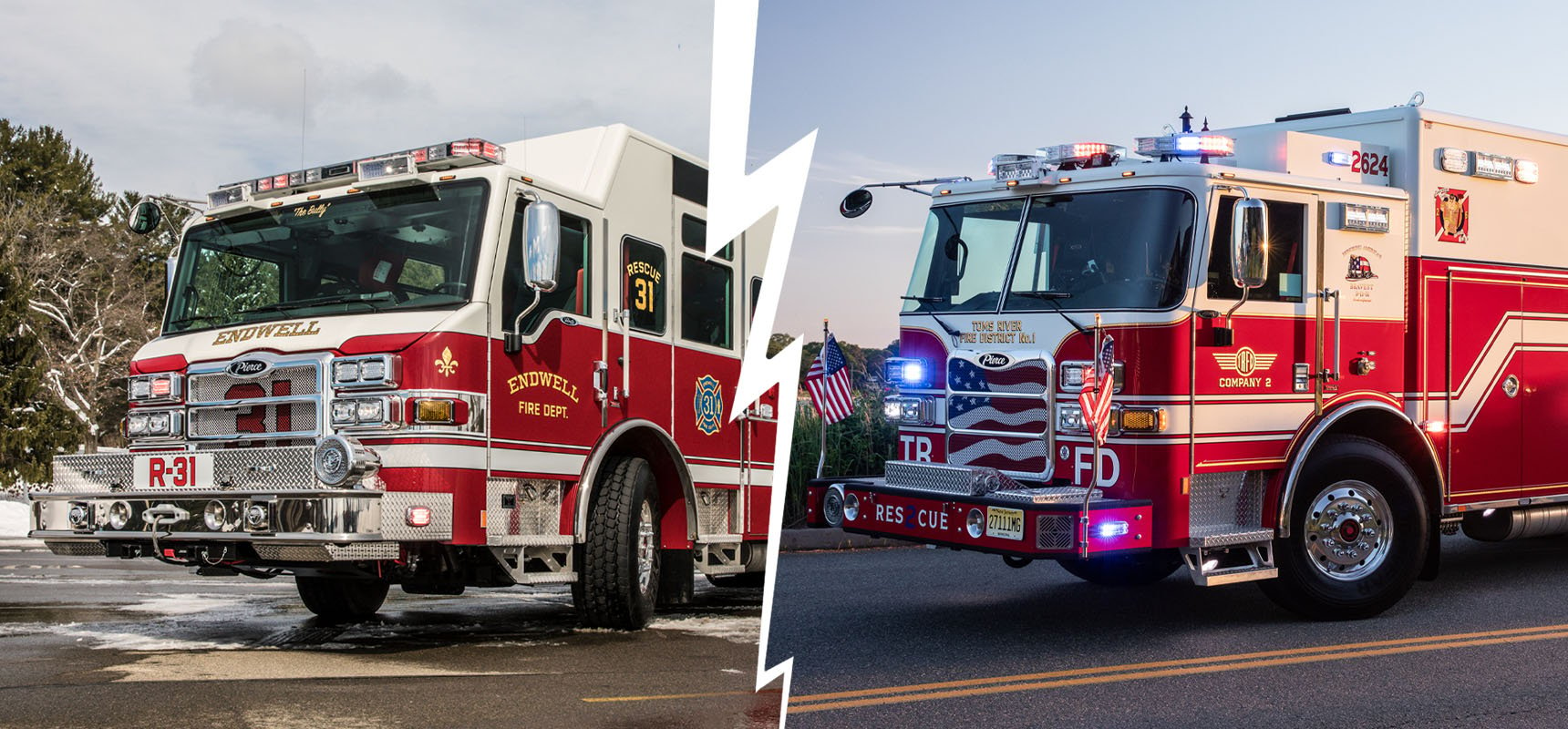
The difference between a walk-in and a non-walk-in rescue fire truck is significant because it dictates the functionality of the apparatus, the tools that can be carried on board, and ultimately, the fire truck configuration.
But before you can compare rescue types, let’s review some common facts and information to aid firefighters in the search for the right rescue truck type.
What is a Rescue Fire Truck?
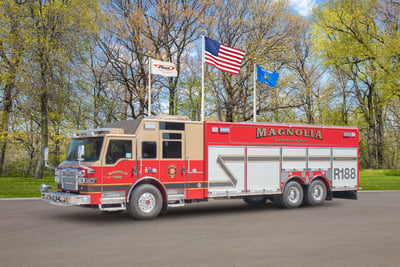
Technically speaking, a rescue fire truck is a specialized vehicle designed to provide support in rescue operations.
But if you were to ask 100 firefighters the definition of a rescue fire truck, you’d likely get 100 different answers. That’s because each rescue fire truck is as unique as the fire department and community it serves.
At Pierce Manufacturing, we often consider a rescue fire truck as a toolbox:
- It is uniquely sized, shaped and constructed for the tasks at hand.
- It holds the necessary tools for the types of rescue operations in the community.
- The tools are organized to best meet the needs of the firefighters.
Now, let’s dive into a comparison of two common types of rescue apparatus.
What is a Walk-in Rescue?
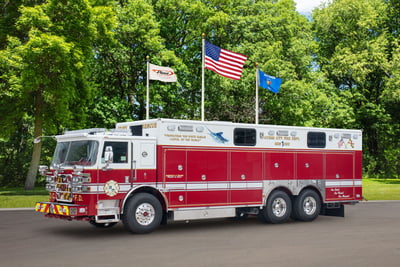 A walk-in rescue fire truck features walk-in open space in the body devoted to personnel.
A walk-in rescue fire truck features walk-in open space in the body devoted to personnel.
In its simplest form, a walk-in rescue truck features an aisle down the center of the body, providing ample space for firefighters and personnel to sit and replenish at the scene of an emergency. However, modern walk-in rescues come in all shapes and sizes, with compartments, laboratories, command centers, and more onboard.
A walk-in apparatus is ideal for extreme weather conditions, allowing firefighters to get out of the elements on-scene. In addition, a walk-in fire truck may be required if the tools your department carries on board are sensitive to temperature or other environmental elements. Lastly, these trucks can be set up for command operations during lengthy emergency calls, allowing firefighters to work at stations and with specialized tools and equipment on board.
Walk-In Options
Based on the needs of a fire department, the ‘walk-in’ portion of a fire truck can be executed in several different variations. Access points can include the rear of the vehicle, either or both sides, the cab of the vehicle or any combination of those points.
- A hazmat rescue vehicle, for example, could include a walk-in portion at the front of the vehicle featuring a laboratory designed with an interior fume hood to test chemicals, and chairs and monitors to manage operations.
- A rehabilitation rescue unit could include maximized interior space that includes very little exterior storage but provides full front-to-back and side-to-side interior working space for seating and many types of amenities such as restrooms, refrigerators, coffee makers and microwave ovens.
- A command rescue fire truck could include a conference area with a table, chairs and workstations equipped with telecommunication equipment and monitors.
View additional details about walk-in rescue apparatus now.
What is a Non-Walk-In Rescue?
A non-walk-in rescue fire truck is the most common type of rescue fire truck because it offers the most storage. When a fire department is faced with many rescue scenarios, it may require a rig featuring several types of equipment to match those needs.
In the past, walk-in rescues were often used because they could transport more firefighters to the scene of an emergency. Now that fire truck cabs are designed to maximize every square inch of space, firefighters can sit comfortably in the cab of a non-walk-in rescue, often eliminating the need to ride in the body compartment altogether. As a result, a non-walk-in rescue body can be used exclusively for tool and equipment storage.
View additional details about non-walk in rescue apparatus now.
Why Does this Difference Matter?
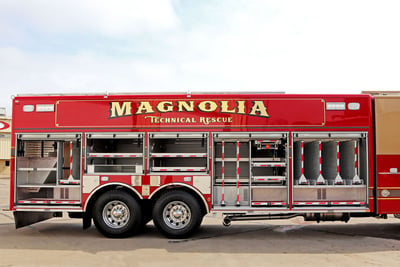 The difference between walk-in and non-walk-in rescue fire trucks is important for fire departments to understand because it dictates the tools on board, the organization of the tools and the overall function of the fire truck.
The difference between walk-in and non-walk-in rescue fire trucks is important for fire departments to understand because it dictates the tools on board, the organization of the tools and the overall function of the fire truck.
It’s important to outline the mission of the truck and be very thoughtful when it comes to these questions:
How many firefighters will be on board the truck?
Knowing how many firefighters need to travel to the scene can very quickly determine the type of rescue you need.
What are the firefighters doing at the scene?
Understanding the common tasks firefighters complete at the scene of an emergency will dictate if an interior space may be required on the truck.
Which tools do they need to have onboard the truck?
Establishing the tools that need to be on board to successfully manage calls will determine how much storage is required. Keep in mind that just because your old rescue had certain tools doesn’t mean you need to allot space on a new apparatus for the same tools. Determine which tools are required for the types of calls you manage most frequently.
Which tools do they use most often?
Understanding the tools that are used on-scene will help determine the ideal storage and configuration of a new rescue fire truck. The most important tools should be stored in easily and immediately accessible compartments. Tools that are seldom used can be stored in roof or interior compartments.
What is the optimal way to access the tools onboard?
As you consider the ideal type or rescue, fire departments must also consider the optimal way to access tools. Part of the planning process should include a discussion of what tools can be safely carried down a ladder, for example, or safely stored and pulled down from a high compartment area.
Having these conversations with your local dealer can help your fire department narrow down the goals and objectives of a new rescue. These conversations often help support the selection of either a walk-in or non-walk-in rescue apparatus.
Learn more of what you should consider in this helpful blog post: How to Determine the Best Rescue Apparatus for Your Fire Department
What Factors in Rescue Apparatus Purchasing Need to be Considered?
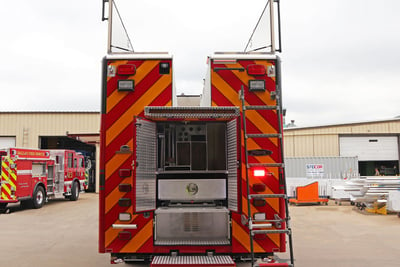 Ultimately, a fire department’s goal is to find the right type of truck that meets the service needs of their community, and we are proud to support that mission.
Ultimately, a fire department’s goal is to find the right type of truck that meets the service needs of their community, and we are proud to support that mission.
At Pierce Manufacturing, we often advise firefighters to connect with neighboring fire stations and learn as much as they can about both walk-in and non-walk-in rescue fire trucks.
Consider additional elements, like:
- The length of your station bay
- The role of the fire truck in the existing fleet
- Strategic compartment storage
- The height of the apparatus and how that influences tool access
- Roll-up or hinge compartment doors
- Ergonomics and tool placement
- Equipment layout options
- Advancements in rescue storage
Do you have questions? Reach out to Pierce in the comments and we’d be happy to answer them directly.
If you’re interested in learning more about Pierce’s rescue units, take a look at our brochure or contact your local dealer today.